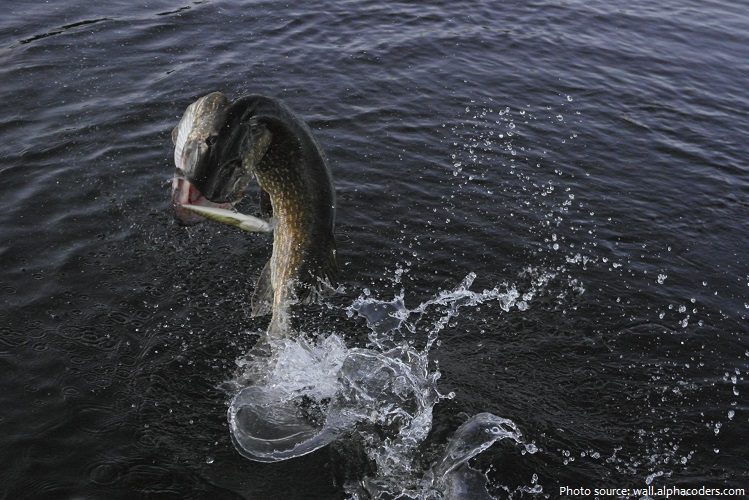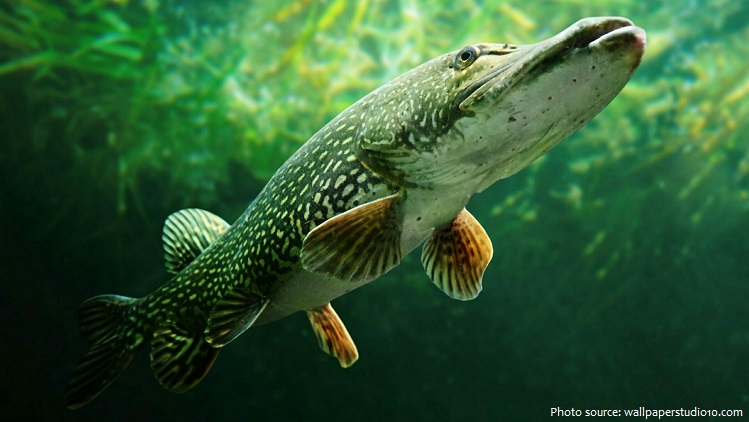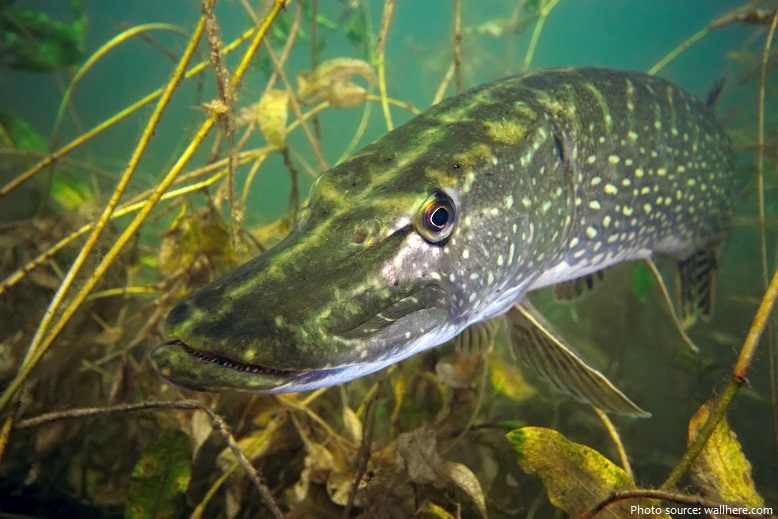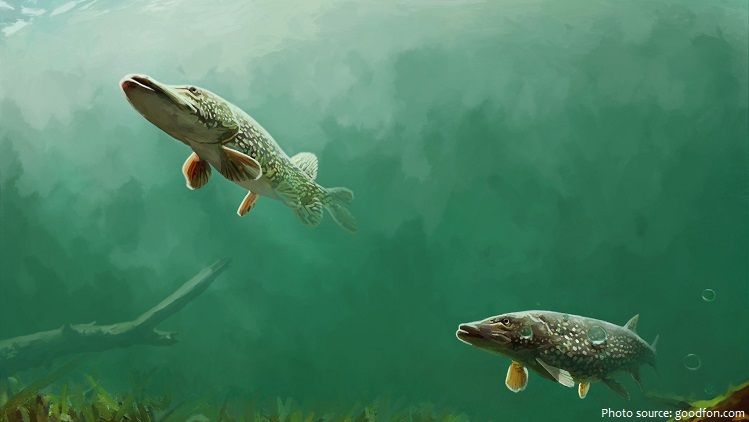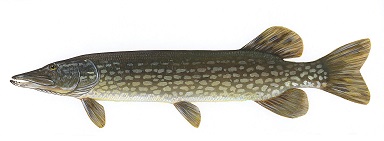The northern pike (Esox lucius), known simply as a pike is a species of carnivorous fish.
It is found throughout the northern hemisphere, including Russia, Europe and North America.
Northern pikes inhabit almost every type of freshwater, from cold deep lakes, to warm shallow ponds, to muddy rivers. Having a broad range of tolerances for water temperature, clarity and oxygen content allows pikes to be extremely adaptable to different conditions.
Northern pike can live up to 12 years.
Pike can grow to a relatively large size: the average length is about 40–55 cm (16–22 in), with maximum recorded lengths of up to 150 cm (59 in) and published weights of 28.4 kg (63 lb).
They are recognized by the elongate body, small scales, long head, shovellike snout, and large mouth armed with a large number of very sharp teeth.
Pikes are most often olive green, shading from yellow to white along the belly. The flank is marked with short, light bar-like spots and a few to many dark spots on the fins. Sometimes, the fins are reddish. The underside is white to cream-colored.
The northern pike is a largely solitary predator.
They are typical ambush predators; they lie in wait for prey, holding perfectly still for long periods, and then exhibit remarkable acceleration as they strike.
Pikes are feed mainly on fish and frogs, but also small mammals and birds fall prey to pike.
An interesting behavioral trait that pike have is that they have short digestion times and long feeding periods.
They can undergo many of these fast bursts to collect as much prey as they can. Pike are least active during the night.
Northern pike can swim 10-13 kilometers (8-10 miles) per hour.
Pike breed in the spring. They are spawning in spring when the water temperature first reaches about 9 °C (48 °F). They have a tendency to lay a large number of eggs. The eggs that survive hatch in about 2 weeks. With their insatiable eating habits young pikes grow rapidly in both length and weight.
Because of their cannibalistic nature, young pike need places where they can take shelter between plants so they are not eaten.
The northern pike gets its common name from its resemblance to the pole-weapon known as the pike.
Pike fishing is popular sport. Effective methods for catching this hard-fighting fish include dead baits, lure fishing, and jerk baiting. They are prized as game fish for their determined fighting.
The International Game Fish Association currently recognizes a 25 kg (55 lb) pike caught by Lothar Louis in Lake on Grefeern, Germany, on 16 October 1986, as the all-tackle world-record northern pike.
Many countries have banned the use of live fish for bait, but pike can be caught with dead fish, which they locate by smell.
In Finland, catching a kymppihauki, a pike weighing at least 10 kg (22 lb), is considered the qualification as a master fisherman.
The white and mild-tasting flesh of pikes has a long and distinguished history in cuisine and is popular fare in Europe and parts of North America.
Historical references to cooking pike go as far back as the Romans.
